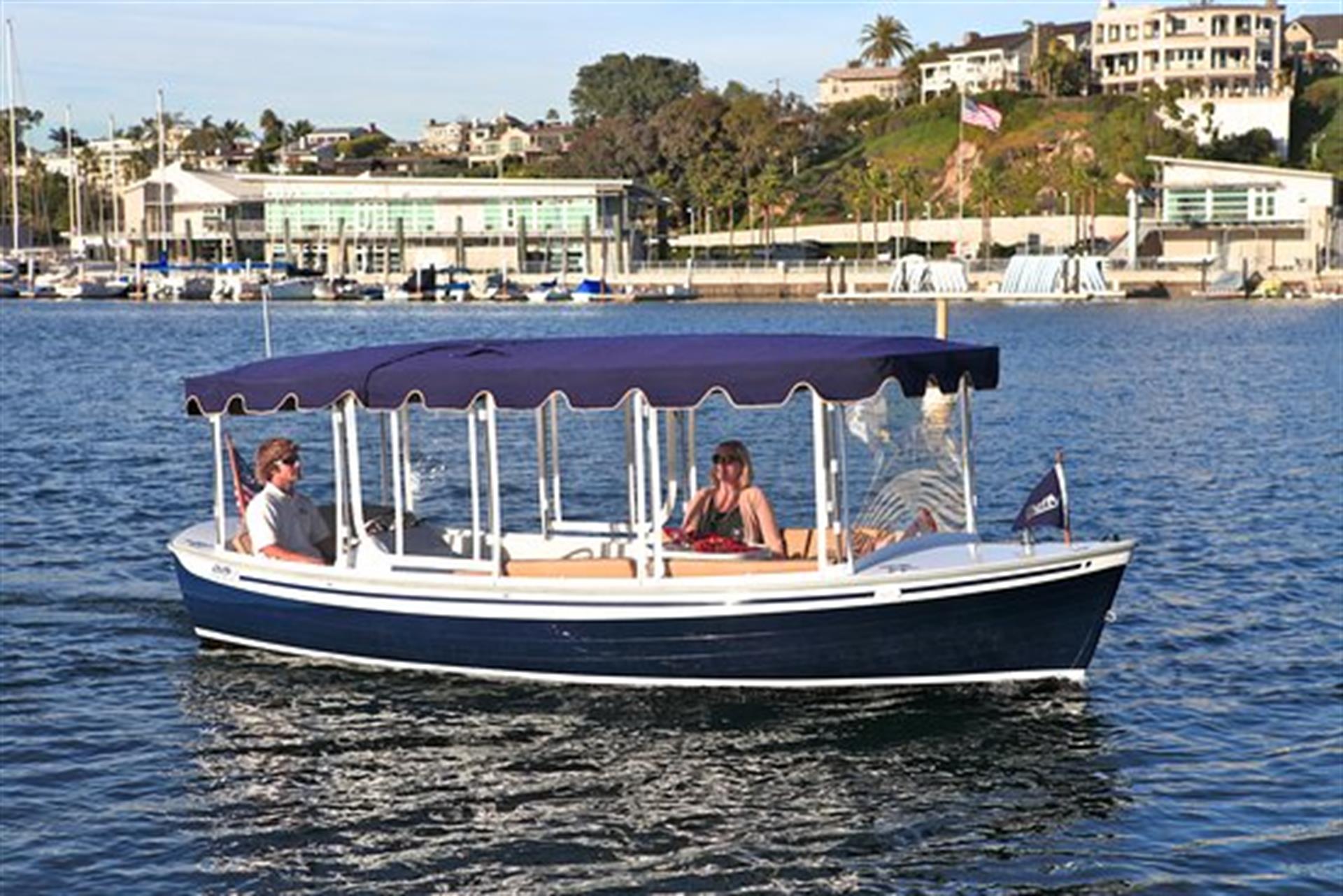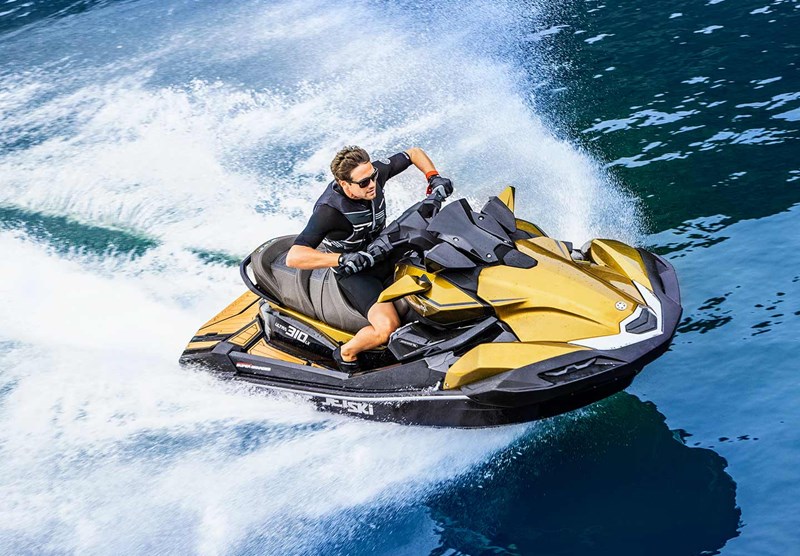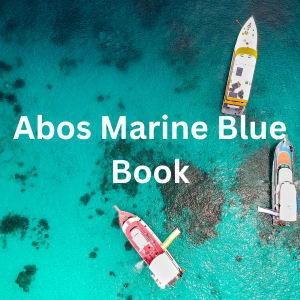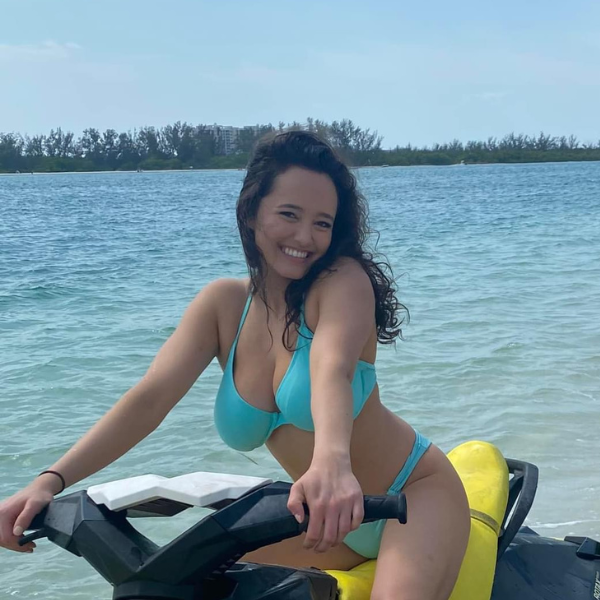Other Boats
Alternative watercraft are becoming increasingly popular as people seek more environmentally friendly and innovative ways to enjoy water-based recreational activities. These vessels, often made from advanced materials or designed with unique features, provide different advantages compared to traditional boats and personal watercraft. Whether used for sport, leisure, or transportation, these alternative watercraft options can cater to a variety of preferences and needs.
One notable alternative watercraft material is a rigid and light sandwich-structured composite, which can improve performance and durability in marine engineering applications link. Additionally, there are watercraft innovations specifically aimed at making boating more accessible for individuals with disabilities, such as adaptive kayaks and specialized equipment link. These advancements help address various challenges that water enthusiasts may encounter, making it easier for a broader range of people to enjoy water-based activities.
Key Takeaways
- Alternative watercraft offer environmentally friendly and innovative options for water recreation.
- Advanced materials and designs can improve performance and accessibility for diverse users.
- The popularity of alternative watercraft highlights the desire for more sustainable and inclusive water-based experiences.
Understanding Watercrafts
Watercrafts come in various shapes, sizes, and types to meet the diverse needs of boaters. These watercrafts can range from small, hand-powered vessels like canoes and kayaks to larger, motorized boats like powerboats and sailboats.
Hand-powered vessels are popular among those who enjoy a more intimate and controlled experience on the water. Canoes and kayaks are classic examples of these watercrafts, offering a quiet and maneuverable mode of transportation that allows users to explore various water bodies with minimal environmental impact. Paddleboards, pedal boats, and float tubes are also popular hand-powered watercraft options, each offering unique benefits and challenges depending on the user's skill level and preferences.
Inflatable boats, another alternative watercraft category, are lightweight and easy to transport, making them ideal for boating enthusiasts who have limited storage space or need a versatile watercraft that can be easily deflated and stored when not in use. Inflatable boats and sea-doos can be used for various activities, such as fishing, leisure cruising, or even as small rescue boats.
Motorized watercrafts, such as powerboats and sailboats, cater to those who desire faster and more powerful water-based transportation. Powerboats use an engine to propel them across the water, while sailboats harness wind power to navigate waterways. These types of watercrafts are typically larger, offering more room for passengers, cargo, or leisure activities, such as fishing and water skiing.
Whether someone prefers the simplicity of a hand-powered vessel or the excitement of a motorized boat, there is an alternative watercraft to suit their needs. The wide variety of options available ensures that anyone, whether they're an experienced sailor or new to the world of boating, can find a suitable watercraft to enhance their experience on the water.
Alternative Watercraft Registration
Alternative watercraft registration is necessary for certain types of watercraft, especially those operating in an environmentally-friendly or innovative way. Registering these watercraft not only ensures that they meet safety and operational standards but also helps track the growth and impact of alternative watercraft on the waterways.
Boat registrations are essential for the proper functioning of any watercraft system, including alternative watercraft. When registering an alternative watercraft, one needs to provide proof of ownership, usually in the form of a bill of sale or a manufacturer's certificate of origin. In some cases, a certified watercraft registration application must be submitted to the relevant state's regulatory body.
In Ohio, for example, OH numbers are assigned to registered vessels. These identification numbers must be displayed on the vessel, making it easier for the authorities to monitor and enforce safety regulations. The registration process in Ohio includes submitting the Ohio boat registration application along with the necessary ownership documents and fees.
As with traditional watercraft registration, alternative watercraft requires renewal at regular intervals, typically every one to three years depending on the jurisdiction. Failure to maintain a valid registration can lead to fines or even to impoundment of the watercraft.
It is essential to research the specific requirements and regulations for registering alternative watercraft within your state or jurisdiction, as these rules may vary. In some areas, alternative watercraft may qualify for tax incentives or other financial benefits designed to encourage their use and adoption.
Overall, alternative watercraft registration is an essential step in maintaining safety, efficiency, and environmental responsibility on our waterways. By adhering to the registration process and staying informed of any changes in requirements, alternative watercraft owners can play a significant role in preserving and improving our maritime environment.
Types of Alternative Watercraft
The world of alternative watercraft covers a wide range of different designs and technologies. This section focuses on some of the most popular types, including personal watercraft, recreational boats, and innovative designs that are becoming increasingly popular among enthusiasts.
Personal Watercraft (PWC): Alternative personal watercraft are designed to be smaller, more agile, and environmentally friendly than traditional watercraft. These PWCs often use electric motors or other alternative propulsion systems, minimizing pollution and noise. Examples of alternative PWCs include electric jet skis and solar-electric powered boats. Apart from their environmental benefits, these watercraft can often become more cost-effective in the long run due to lower fuel and maintenance costs.
Recreational Boats: As the demand for sustainable and eco-friendly options grows, we see increasing interest in alternative recreational boats. These boats use alternative fuels or innovative designs that improve fuel efficiency, reduce emissions, and lower their overall environmental impact. For instance, butanol-based fuels are being explored as a promising alternative to traditional gasoline, due to their compatibility with a variety of boat fuel systems and their potential to reduce air and water pollution.
Innovative Materials and Designs: New materials and designs are being developed to enhance the performance, efficiency, and sustainability of alternative watercraft. A unique concept of composite material has been proposed for high-speed boats, using a sandwich system with different core materials to optimize the boat's structure. This could lead to stronger, lighter, and more fuel-efficient watercraft.
Registration Process and Fees in Ohio
Registration Process
In Ohio, watercraft registration is a necessary step for boat owners. The process involves visiting a watercraft office to complete the required paperwork. Boat owners need to provide proof of ownership, information about the boat, and proof of insurance if applicable. The registration process may also be completed by a boat registration agent who can assist with paperwork and submission.
Registrations are generally valid for three years, after which they need to be renewed. Upon successful registration, the owner receives a registration certificate and boat decals that must be displayed on the watercraft. It is important to note that Ohio does not differentiate between motorized and non-motorized boats – all boats require registration.
Registration Fee Details
The registration fees for boats in Ohio are determined by the length of the vessel. The fees are structured as follows:
- Boats less than 16 feet: $25
- Boats between 16 and 26 feet: $33
- Boats between 26 and 40 feet: $55
- Boats 40 feet and above: $80
These fees must be paid at the time of registration and are used for the management and maintenance of waterways within the state. Boat insurance is not mandatory in Ohio, but it is recommended for protection against damages or liability while on the water.
In conclusion, it is essential for boat owners in Ohio to follow the registration process and pay the required fees according to their boat's length. This helps maintain the state's waterways and ensures compliance with the law.
Transfer of Ownership
Transferring ownership of a watercraft involves a series of steps to ensure the legal exchange of possession from the current owner to the new owner. It's crucial that both parties understand the process to prevent disputes and complications in the future.
Initially, the seller should provide the buyer with a bill of sale, which is a document verifying the buyer's intent to purchase the watercraft, the agreed-upon price, and the boat's identification details. This document should be signed by both parties and serves as evidence of the transaction.
Moreover, the seller is responsible for furnishing the title of the watercraft, a legal document indicating ownership. The title should be filled out accurately, including vital information about the boat, such as the hull identification number, length, and year of manufacture.
In some cases, alternative methods to transfer ownership might be necessary, including land ownership disputes or multi-jurisdictional exchanges. Practical solutions can be found in specific resources like the Chugach Regional Study Task 220, which aims to analyze land ownership alternatives and interactions among different management jurisdictions.
Once the necessary documents have been exchanged, the buyer should register the watercraft as dictated by local regulations. This process might differ depending on the country or state, so it's crucial for the buyer to be aware of specific guidelines to ensure a smooth transition.
Lastly, it's essential for both parties to be prepared for any additional costs associated with the transfer of ownership. This could include taxes or fees, registration charges, or even unexpected repair expenses for the new owner. Estimating these costs beforehand will prevent any surprises and ease the overall process for both parties.
Boating Laws and Safety in Ohio
Ohio has comprehensive boating laws in place to ensure the safety of its waterways, including rivers and lakes. The Ohio Boater Freedom Act has established regulations to protect boaters and promote responsible practices while out on the water.
To operate a boat in Ohio, individuals must obtain a boating education certificate. Boat operators born on or after January 1, 1982, are required to complete a certified boating course approved by the Ohio Department of Natural Resources (ODNR). These courses cover important topics such as safe boat operation, navigating waterways, and emergency preparedness.
Water activities such as fishing are popular in Ohio's lakes and rivers. Regulations and licensing requirements for fishing are set by the ODNR. Anglers must obtain a valid Ohio fishing license, and the type of license depends on factors such as residency, age, and whether fishing for pleasure or commercial purposes.
Boats with an engine horsepower of 10 or more are required to have a valid registration from the state of Ohio. This registration must be renewed every three years. Additionally, all boats must carry the necessary safety equipment, such as life jackets and signaling devices, in accordance with Ohio law.
To promote responsible practices on the water, Ohio enforces strict alcohol consumption regulations for boat operators. Operating a boat under the influence (OVI) is illegal and carries severe penalties, including fines, suspension of boating privileges, and even imprisonment.
Adherence to Ohio's boating laws and safety regulations is essential in maintaining a secure environment for all water enthusiasts. By educating themselves on these rules, boat operators can ensure they are equipped to navigate the state's beautiful lakes, rivers, and waterways responsibly.
Important Forms & Documents
When dealing with alternative watercraft, it is crucial to understand and manage the required forms and documents. This section highlights the essential paperwork involved in original registration, renewal registration, and ownership transfer of watercraft.
Original Registration
The original registration process is necessary for any newly acquired or homemade watercraft. To complete the boat registration, applicants must provide detailed information about the watercraft, such as its type, length, make, model, and hull identification number (HIN). Additionally, proof of ownership, like a bill of sale or a manufacturer's statement of origin, is required. Some regions may also need a watercraft safety certificate as part of the registration process.
Don't forget to keep a copy of the registration form for any future needs. In case of a lost or damaged registration, you can submit a duplicate order form to obtain a new one.
Renewal Registration
Renewing the registration of a watercraft is a key responsibility for every owner. The process usually involves providing updated personal information and paying the required renewal fees. Renewal frequency and deadlines vary by jurisdiction, so it's important to be aware of local regulations and complete the renewal on time to avoid penalties.
Make sure to carry the renewed registration while operating the watercraft and be prepared to present it if requested by enforcement officers.
Ownership Transfer
Transferring ownership of an alternative watercraft is a straightforward process. Both the seller and the buyer must complete certain forms and documents to ensure a smooth transaction. The seller should provide the buyer with a properly signed and notarized title or other proof of ownership. The buyer must then submit the title or proof of ownership, along with the original registration and other required documents, to the appropriate authorities.
During the transfer process, the new owner may also need to pay sales tax on the purchase price of the watercraft, in addition to any registration or transfer fees. Remember to update the registration records to reflect the new ownership details.
In conclusion, staying on top of the important forms and documents for alternative watercraft can save time, money, and potential legal trouble. Understand the requirements and processes for original registration, renewal registration, and ownership transfer to ensure a seamless and enjoyable experience with your watercraft.
Further Information and Sources
In recent years, the demand for sustainable and environmentally friendly watercraft has increased. This has led to the development of a range of alternative watercraft options that are both energy-efficient and eco-friendly. Some popular options include solar-powered boats, electric boats, and hybrid boats that combine traditional and alternative power sources.
A prime example of alternative watercraft is solar energy-powered boats. This type of watercraft uses solar panels to generate electricity, which powers the boat's propulsion system. Solar-powered boats offer a sustainable and resilient alternative to traditional boats that rely on fossil fuels. They have minimal environmental impact and provide a cost-effective solution for short-distance transportation and recreational activities.
Electric boats, another alternative watercraft, rely on electric motors for propulsion. They typically use batteries as their main power source, which can be charged using shore power or by renewable energy sources such as solar or wind. Electric boats offer a cleaner and quieter alternative to traditional boats, minimizing both air and noise pollution.
Hybrid boats combine the best of both worlds by utilizing traditional engines and alternative power sources such as batteries or solar panels. These boats automatically switch between power sources depending on the situation to optimize fuel consumption and reduce emissions.
Some watercraft interception programs have also been established to ensure the safety and sustainability of alternative watercraft. These programs aim to set uniform minimum protocols and standards for alternative watercraft and promote the use of environmentally friendly technologies in marine transportation.
Investing in alternative watercraft not only benefits the environment but can also contribute to the growing eco-tourism industry. These innovations may attract environmentally conscious tourists who seek out sustainable travel options, ultimately driving the market for alternative watercraft.
For those interested in learning more about alternative watercraft and their impact, it is essential to research and consult various sources. A wealth of information can be found through academic articles, industry publications, and government reports. This will help ensure that individuals are well-informed about the benefits and potential drawbacks of alternative watercraft technologies.
Frequently Asked Questions
What are some eco-friendly watercraft options?
Eco-friendly watercraft options are gaining popularity as people become more environmentally conscious. Some examples include solar-powered boats, electric boats, and boats that use alternative fuels like bio-diesel or compressed natural gas. Swedish pilot boats have been investigated for using alternate fuels, making them an interesting option to consider.
Which watercraft are best suited for shallow waters?
Shallow water requires watercraft with a minimal draft, making flat-bottomed boats or shallow draft vessels ideal choices. Examples include kayaks, canoes, jon boats, and airboats. These types of boats can navigate shallow waters without getting stuck or damaging their hulls.
How do electric watercraft compare to traditional ones?
Electric watercraft offer several advantages over traditional ones, such as reduced noise pollution and zero emissions. Electric boats also typically require less maintenance compared to gasoline-powered watercraft. However, one of the main challenges is limited range and longer recharging times, but advancements in battery technology are continually improving these factors.
What are the most popular types of non-motorized watercraft?
Non-motorized watercraft are often used for leisure and recreational activities. Popular examples include kayaks, canoes, paddleboards, and sailboats. These types of watercraft provide a quiet, eco-friendly way of enjoying time on the water, and are often less expensive and easier to maintain compared to motorized options.
Which watercraft brands are best for performance and reliability?
Performance and reliability can vary among watercraft brands, so it is essential to research specific models and read reviews from owners and industry experts. Some well-known brands that consistently receive high marks for performance and reliability include Yamaha, Sea-Doo, and Boston Whaler, among others.
How do personal watercraft sizes and weights vary among models?
Personal watercraft (PWC) sizes and weights can fluctuate significantly across different models. Factors such as engine size, hull design, and materials used can influence a PWC's dimensions and weight. For example, label evaluation for PWCs can be essential for determining specific characteristics and suitability. It is vital to consider factors like intended use, storage, and transportation when selecting the right PWC model.
Specifications
Featured Brands
All Brands for Other Boats
- AS Marine
- ATX
- ATX Boats
- ATX Surf Boats
- Abacus
- Abati Yachts
- Absolute
- Albemarle
- Alliaura
- AluForce
- Alumacraft
- Antaris
- Apreamare
- Aquila
- Arima
- Ascend Kayak
- Astondoa
- Austin Parker
- Avalon
- Avenger
- Aviara
- Avid
- Axis
- Axis Wake Research
- Axopar
- Azimut
- B2 Marine
- Baja
- Bankes
- Barletta
- Bass Cat
- Bavaria
- Bayliner
- Belliure
- Beneteau
- Bennington
- Bentley Pontoons
- Berkshire
- Bertram
- Black Thunder
- Blackfin
- Blue Wave
- Bluegame
- Boats Mak
- Bombardier
- Bonafide
- Boston Whaler
- Breehorn
- Bulls Bay
- Cantieri Estensi
- Cape Horn
- Capelli
- Carolina
- Carolina Skiff
- Carver
- Catalina
- Cayman
- Caymas
- Centurion
- Century
- Chaparral
- Chris-Craft
- Cigarette
- Cobalt
- Cobia
- Comar
- Contender
- Contest
- Correct Craft
- Cranchi
- Crest
- Crestliner
- Crevalle
- Crownline
- Cruisers Yachts
- Custom
- Cutwater
- Dalpol
- De Antonio Yachts
- Dehler
- Dellapasqua
- Diano
- Donzi
- Duckworth
- Duffy
- Dufour
- Dutch Barge
- Ebbtide
- Edge Duck Boats
- Edgewater
- Elan
- Eolo
- Etap
- Everglades
- Excel
- Excel Boats
- Faeton
- Fairline
- Falcon
- Ferretti Yachts
- Fiart
- Finseeker
- Fjord
- Formula
- Fountain
- Fountaine Pajot
- Four Winns
- Fratelli Aprea
- Frauscher
- G3
- Gala
- Galeon
- Gator
- Glacier Bay
- Glastron
- Gobbi
- Godfrey
- Godfrey Pontoons
- Gozzo Positano
- Grady
- Grady-White
- Grand Soleil














































































